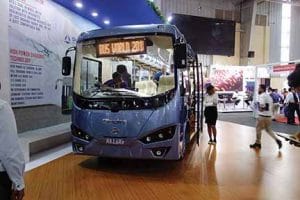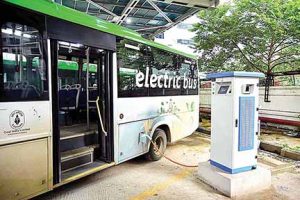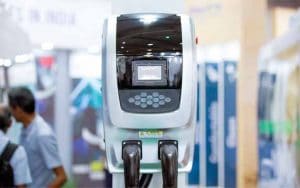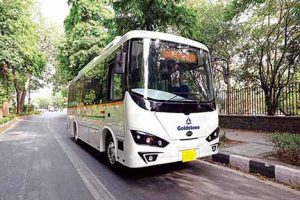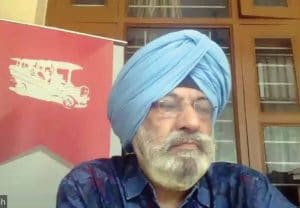The Covid-19 situation has changed the electric bus outlook.
Story by Deepti Thore
As the principal mode of commuting the world over, buses have proven their utility value despite the advent of newer, seemingly better and more efficient travel mediums like metro and monorail. As part of its evolution cycle, buses have been incorporating new technologies to make them efficient and in-tune with the requirements of the travellers. The Covid-19 situation has however triggered a set of changes that could influence the evolution of buses such that the process of electrification would either accelerate or decelerate. In India, the rules of the game are set to change as more and more bus operators come under stress and struggle to stay afloat.
Catering to almost 90 per cent of the public transport requirement in the country as a cheaper and convenient medium, buses are set to undergo a big change. They are set to undergo a big change that would affect its short, medium and long term prospects. With global bus majors like Volvo Bus Corporation deciding to merge its successful bus business with its JV partner, Volvo Eicher Commercial Vehicles, the bus scene in India is set for a drastic change. A change that would perhaps have the biggest effect on electrification. With the transition of aging diesel fleets to electric ones with encouragement from the government through schemes like FAME II, the scenario post Covid-19 is looking to be quite different. Though stress would continue to be on a move to sustainable transportation, the electric buses offer one of the most compelling solutions which is expected to be scrutinised more thoroughly.
At a recent webinar organised by the Busworld Academy, Amitabh Kant, I.A.S. CEO, NITI Aayog, Government of India, drew attention to the 18 per cent decline in auto sales even before the Covid-19 situation arrived, from Rs.2.6 crore in FY2018-19 to Rs.2.1 crore in FY2019-20. Two-wheeler sales declined by 20 per cent resulting in sales reduction of 40 lakh units, he expressed. Highlighting the drop of 30 per cent in CVs, and terming the same as the the highest, Kant averred that auto sales over the last 12 months have been recovering. They started showing signs of recovery from April 2020, he informed.
Of the opinion that there is a huge opportunity for electric buses and two-wheelers in India, Kant explained that the 2011 Census captured a travel trend of people from the non-agricultural sector in the country. He added that the trend also highlighted that nearly 50 per cent of Indians use Non-Motorised Transport (NMT) modes, which include walking or cycling. Stating that 11 per cent Indians use buses whereas autos and taxis are used by a mere three per cent, Kant said that buses were poised to serve as the best mode of transport of the future. Informing that four-wheelers are used by only three per cent and two-wheelers by 13 per cent people, he averred that the need is for a robust and efficient community transportation. “It works out cheaper and is environment friendly as well as sustainable,” he remarked.
Bus electrification
Pointing at India’s status as the second biggest market of buses in the world by volumes at one lakh per year after China, Dr. Kulwant Singh, Advisor, Busworld Academy, expressed that a need to analyse the current situation from the point of view of electric buses is necessary. Especially when India ranks second biggest bus market in the world in terms of volumes. “Close to one lakh buses are sold in India every year,” he quipped. Touching on electric bus scenario in India in terms of manufacture, standardisation, development of charging infrastructure, and promotion and financing of electric buses in India, Dr. A K Jindal, Advisor e-Mobility, New products and Technology, TATA Autocomp Systems Limited, mentioned that the demand for buses on the basis of total requirement is quite high. “There is huge potential in terms of numbers if all the public transport is to be electrified by 2030,” he added.
Of the opinion that the city bus industry in India continues to be fragmented even though there are not many private companies participating, Dr. Kulwant Singh mentioned that the acceptance of e-buses in India has been slow. The biggest hurdle is their cost, he added. Drawing attention to the rising instances of outsourcing city bus operations, Singh averred that most companies in India operate only a small number of buses. The outsourcing business model, he said, is either on gross or net cost basis. Calling for the need to offer a higher incentive for e-bus operation, Singh explained that cities like Delhi and Mumbai have taken to CNG buses.
Advantage e-bus
Stating that a lot of saving could be realised if the entire public transport network in the city shifts to e-buses, Dr. Jindal informed that the real-time need is to deploy 12000 to 15000 e-buses for city operation every year till 2030. Stating that the deployment of e-buses for city operations would lead to net foreign exchange outflow savings of five billion dollars roughly by lowering the import of crude oil and reducing diesel consumption, he said that the total requirement of around 1,60,000 city buses is there in India if one were to look at the Indian transport policy, which mentions the need for 50 buses per one lakh population. As of now, there are 40,000 city buses, he added. Touching on the menace of air pollution in Indian cities, Jindal expressed that the need for cleaner transport mediums will rise further.
Sharing his experience on EV development, Jindal opined that post-Covid parameters like rapid urbanisation, traffic congestion, air pollution as well as design and mobility challenges will make them more relevant. He informed that India is poised to experience unprecedented rise in urbanisation with 68 more cities rising with a population of over a million people by 2030. Developments like these call for a faster migration to EVs. Pointing at India as the third largest oil consumer (consuming four million bpd), Dr. Jindal said that one-third of crude imports are used for transportation. Of these, about 80 per cent are used for road transportation, he added. Drawing attention to the National Electric Mobility Mission, which has been designed and engineered to drive 100 per cent transition to e-mobility by 2030, and of which the FAME II scheme is a part, Dr. Jindal averred that technology development, demand creation, pilot projects and charging infrastructure are the key attributes of it.
Of the opinion that new technology should envisage sustainability, protection of environment and deep social change, Dr. A K Jindal explained that significant GHG emission reductions will be achieved by transport electrification and decarbonisation of power generation. Terming buses as one of the key drivers for e-mobility, he said that the allocation of Rs.3500 crore for 7000 e-buses in the country is good. Drawing attention towards the sanction of 5595 e-buses by various STUs, Dr. Jindal informed that the cap on incentives for buses amounts to 40 per cent of the cost of vehicle.



